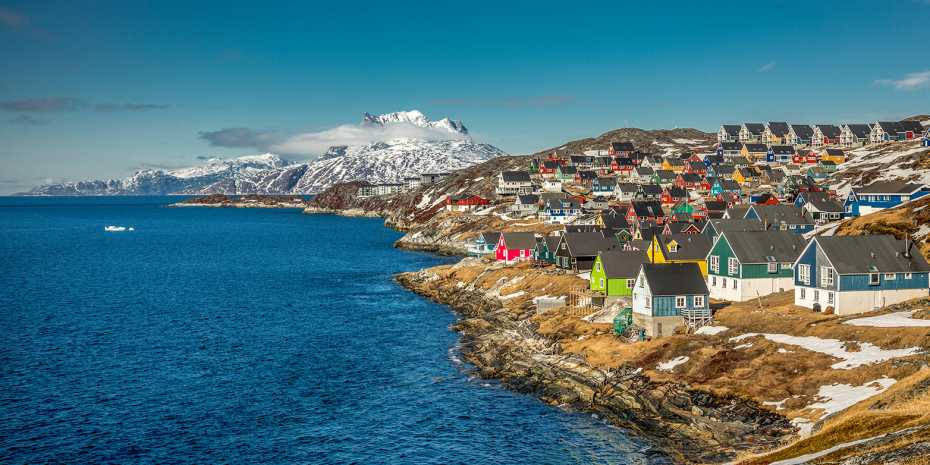Swiss Federal Institute of Technology in Zurich (Switzerland) – New research programme takes a close look at Greenland’s fjords

The Swiss Polar Institute has launched a four-year study led by EPFL in which researchers from several other Swiss institutions are investigating the impact of climate change on Greenland’s fjord ecosystems. Research groups from ETH Zurich are also involved.
The waters of the fjord region in southwest Greenland are rich in nutrients and marine life. Fishing has been the main source of income for people here for thousands of years. However, climate change is rapidly altering this ecosystem, and these dynamics pose enormous challenges for the local population.
Greenland’s glaciers are melting rapidly, releasing new types of nutrients into the water, feeding large algal blooms and altering the marine ecosystem. This in turn is affecting the atmosphere’s chemical composition and cloud-formation mechanisms; these clouds are what determine the surface radiation budget and glacier melt. In short, the entire ecosystem is being impacted by climate change. So what can the people of Greenland expect to see in the coming years?
This is one of the many questions to which the GreenFjord research programme aims to find answers over the next four years. The programme is officially launched today, 9 March.
Explore fjord ecosystems in depth
The scientists’ ultimate goal is to better understand the fjord ecosystem in the context of climate change. In particular, they want to improve the computer models they use to predict future shifts in the region’s ecosystem and climate by incorporating factors such as glacier loss and changes in the food chain and carbon cycle.
In addition to conducting field measurements, the scientists will also carry out in-depth interviews with local residents to determine how the effects of climate change will impact their living conditions. To this end, the scientists want to gain a better understanding of how changed carbon and nutrient cycles affect biodiversity in the atmosphere, on land and in the ocean. One focus of the research is on micro- and macrofauna diversity, since this forms the basis of the food chain and ultimately affects the future development of fish stocks.
The programme leader is Julia Schmale, a tenure-track assistant professor at EPFL. The research team will also include scientists from the University of Lausanne, ETH Zurich, the Swiss Federal Institute for Forest, Snow and Landscape Research (WSL) and the University of Zurich. The researchers will be supported by the Swiss Data Science Center.
From ETH, Kristy Deiner and Loïc Pellissier from the Department of Environmental System Sciences as well as Lisa Broeder, senior scientist in Tim Eglinton’s group at the Department of Earth Sciences, are participating in GreenFjord.
Investigate material fluxes
Broeder is heading the Land cluster. She wants to investigate what and how much material, especially nutrients, carbon and sediments, enters the fjords via streams and rivers and how this affects fjord ecosystems. She also wants to find out how soil erosion produces mineral dust, which in turn influences cloud formation.
To do this, Broeder wants to collect soil and water samples and also carry out automated year-round measurements of runoff volumes, temperature and light absorption by dissolved organic matter.
“The Land cluster is tightly linked to others, so we will work closely and across disciplines. The interdisciplinary research is also one of the attractions of this programme for me,” Broeder says.
Analysing the food web with eDNA
The two ETH environmental researchers, Deiner and Pellissier, are also involved in the programme. Together they are working on the Biosphere cluster. A specialist in environmental DNA, Deiner will collect samples in the study area’s various habitats – sea, soil, glaciers, even in the atmosphere – and later analyse them in the laboratory for the DNA they contain.
In this way, she hopes to get a picture of the entire biological diversity of Greenland’s fjord world, from microbes to fungi and plants to large marine mammals. “With the help of environmental DNA, we can reconstruct the entire food web of this ecosystem,” Deiner says. Pellissier and his colleagues will then use the food web DNA data to create landscape ecology models to assess possible future development of fjord habitats.
“The Arctic is one of the most rapidly changing regions in the world due to global warming. That makes it extremely exciting to find out how the biosphere is also changing over time,” Deiner says.
The other four clusters are:
- Cryosphere: Investigating the phenomenon of glacier calving and its effect on the fjord marine dynamics and on nutrient circulation.
- Ocean: Exploring physical, biogeochemical and microbiological processes in fjord systems with marine and land glaciers. The study is conducted from a research vessel with state-of-the-art equipment.
- Atmosphere: Exploring cloud particles of marine and terrestrial origin with a tethered balloon.
- Human dimension: Determining how dependent local people are on the fjord ecosystem and identifying their future needs.
“This will be the first time that the entire regional ecosystem will be researched taking into account the human dimension,” emphasises programme manager Julia Schmale. “This makes our project unique, and it’s characteristic of our approach of linking a variety of scientific disciplines.”
